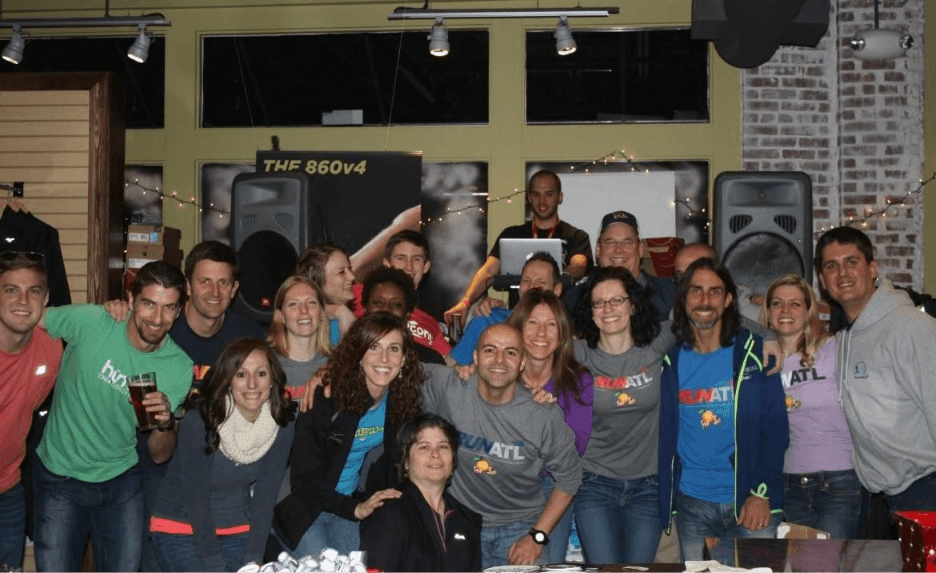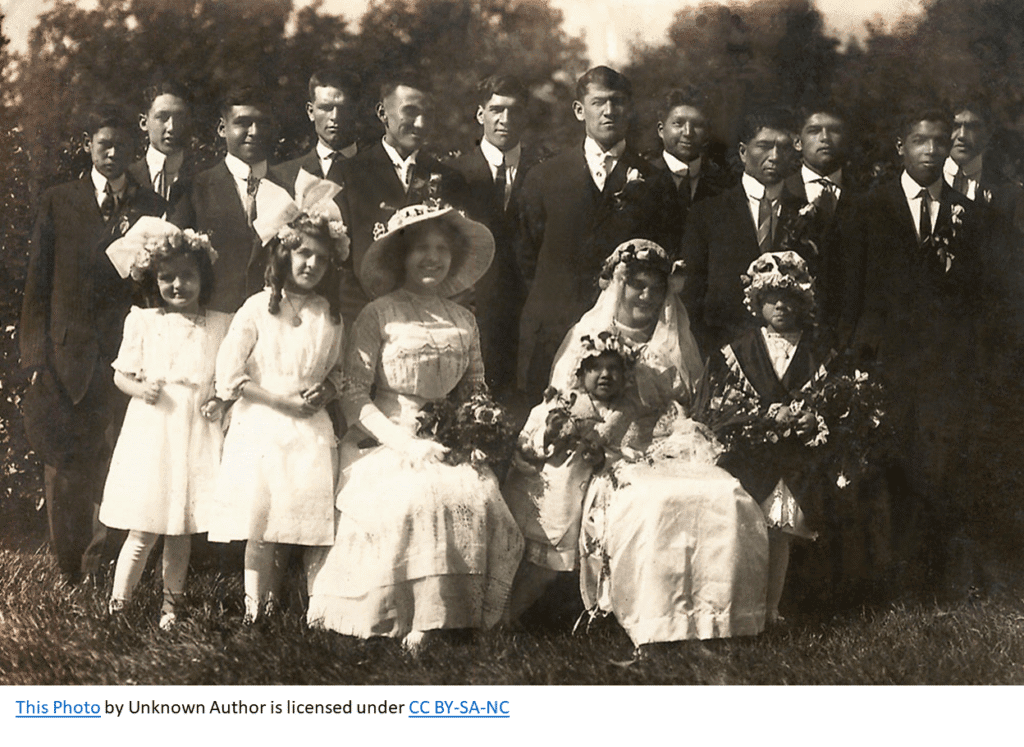
September 2025 – The Fiercest Foes to Organizational Oneness
Please say aloud the word that comes to mind when presented the definition “the state or quality of being one; oneness.”
If you muttered or whispered, “Unity,” I only wish you had shared your guess more boldly. You’re right.
In keeping with the premise of my book (It’s Not the Bricks, It’s the Mortar: Optimize Your Retail Business for Lasting Success), the condition of Unity is critical “mortar.” Said differently, in a favorable interaction with a commercial enterprise, the achievement of Unity isn’t likely something you witnessed or even sensed was present… It is hardly inherent or automatic in any operation. But just like the mortar found in the potentially brick-built plaza that housed the business itself, it is this inconspicuous characteristic that capably holds the more visible aspects of any successful customer engagement together.
To customers, organizational unity is mostly invisible; for leaders, it is always intentional.
Here’s what we know: Despite common observations associated with 1-on-1 service experiences – like a car salesperson with a prospective buyer, or a server with a table of friends gathered for the game, or the department manager assisting you on your most recent trip to a home improvement store – the individual who becomes the “face” of Service is by no means acting alone or exclusively responsible. Whether remarkable or regrettable, there is a squad of others impacting the experience. And Unity determines the difference. The salesman, server or department manager completes the transaction and accepts the gratuity – but the unsurprising truth is that it was a Team effort.
Common Purpose. Supportive Structure.
To this day, my favorite description of the necessary work to attain and sustain organizational unity comes from a Harvard Business Reviewarticle in 2011, “Building a Collaborative Enterprise.” Although the article was not focused on the Service industry, sage guidance is found therein – and it tells leaders intent on improving Unity exactly what to pursue. In short, we progress by “marrying a sense of common purpose to a supportive structure.”
Common purpose. Supportive structure. There it is. Our requirements for Unity are all there… If we achieve these elements, we win.
But let’s be honest: When it comes to customer service in most environments these days, we continue to lose. In fact, in the almost fifteen years since that HBR article was published – and despite the more than 20 billion spent each year around the globe on Customer Experience Management – many would say the scale and embarrassment of loss is only getting worse. For sure, this erosion has many contributing factors. Some of the most popularly referenced include labor shortages, cost-cutting measures and automations that are indifferent to expectations. At the same time, I am certain a lack of “organizational oneness” – or Unity – is equally complicit. After all, if we acknowledge that Service is a group effort – and we have results from these efforts that are increasingly poor – we cannot easily discount the absence or inconsistency of team cohesion as an underlying – even foundational – factor.
So where are “common purpose” and “supportive structure” when we need them most?
From my own experience and observations, there are two primary causes perpetuating the truancy in organizational unity. The first is, simply, a lack of attentiveness. The consideration of Unity in many workplaces is both commonly neglected and sporadically spectacular. Said differently, weeks pass without giving Team Unity a thought… And then in a memorable moment, we collectively raise 2 ounces of top-shelf tequila at the annual offsite. As the Patrón peppers our throat, we deceive both ourselves and those in our care. We intoxicatingly convey, “That should do it. Unity is evident and secure.”

But we are wrong. If we return to the apt metaphor that introduced Common Purpose and Supportive Structure, we see we are “marrying” those concepts to one another. And while certainly not being a qualified counselor, my 25+ years inform me that marriage is a ceaseless pursuit. For the marrying to matter, it is a near-daily effort.

Next, Unity has inborn enemies. They are shadowy, dangerous and unabating. Although the broader explanations and remedies are in my book, here is a primer and some initial prescriptions for the four fiercest foes to our desired and required Unity.
1. A Purpose-Driven Delta Unity falters if leaders don’t know each person’s ‘why.’
We seek purpose in our work. Fortunately, it is proven to be attainable—and it is inspiring when we notice those who have found it! But at the risk of sounding contrary to popular commentary on the promises of teamwork, leaders do notneed a full alignment of individual purpose from each participant for long-standing success as an organization. The risk, instead, is when leaders do not know the specific purpose someone attaches to their work and brings into the workplace. The hazard becomes even greater when a leader assumes that each contributor shares a similar purpose to her own or will be moved to meaningful action for the same reasons that spur others. Leaders must know the purpose of work for each person entrusted to them. A unity-debilitating delta (“a difference between two things”) materializes without this insight or when individual purposes contradict any stated organizational purposes.
2. Disagreement and Disappointment If managed properly, they engender Unity.
In organizational life, Disagreement and Disappointment are unavoidable—but a negative impact from their combined existence is entirely avoidable. Even better, a leader who can master introductions of these themes—and manage their frequent presence—will prove a worthy abolitionist of disunity! The key is to give Disagreement and Disappointment a proper status in the organization. As surprising as it may be, these forces are keenly beneficial to any organizational ecosystem. In fact, they should be welcome escorts by any member of a high-performance Team.
Here’s why: In an organization where there is almost always collaboration, there is seldom consensus. And as soon as we strive for an environment rife with creativity and widespread contribution, we must also cede that consistent and complete alignment of thought is an impossibility. We will regularly disagree with others, and we will likely wrestle with disappointment all the time. These are common affairs in any organization where the sum is truly greater than its parts—and where there is a belief that power and progress are found in diverse experience.
Leaders must bring Disagreement and Disappointment to the fore as companions on the journey to Better or Best Yet. Once each Team Member accepts that Disagreement and Disappointment are important cultural ingredients, they become effective tools protecting and even engendering Unity. They are simply the rightful byproducts of consistent collaboration.
3. Solved… But Unresolved Old wounds quietly sabotage today’s potential
This foe often becomes the devious offspring of the misunderstood pair of Disagreement and Disappointment – especially when a leader is not monitoring those she supervises. At its core, Solved But Unresolved is unaddressed disappointment. It is connected to a historical instance that was seemingly solved—but emerges in the present as not fully resolved. Without an obvious connection to current priorities, it is often silently destructive. It may be residue associated with an anticipated promotion or the percentage points affixed to a deserved merit increase. It may surface as a formerly unexpressed sentiment after a dispute among constituents, or it might evidence itself in a moral divide between personal practices and company policy. It could even be revealed in a rift among colleagues that originated way outside traditional organizational boundaries. It is certainly not unheard of for a lover spurned or a friendship burned to become prime fodder for our foe to make daring moves of ruination inside the establishment. Simply put, someone remains peeved about an outcome from the past—and it has now spilled onto the pages of a new chapter.
And something must be done.
Where the remedy with Disagreement and Disappointment puts some of the responsibility on others to preserve Unity, this foe needs to be slayed by the leader alone. And it can only be done through direct contact with the source of discontent. Yes, the more convenient alternative will be to do nothing. And I know too well that it is more comfortable to depend on the passage of time to take care of the trauma being inflicted on a formerly unified cadre… But the leader cannot pursue this primrose path. Any unresolved disagreement, disappointment, anger, hurt or frustration detected or suspected needs to be addressed. Moreover, Solved But Unresolved is not conventional conflict-related combat. After all, we are not ironing out a difference of opinion or mediating in the interests of multiple parties. Our specific task is to determine whether someone (or multiple persons) can productively accept a solution that has been elected and decisions that have already been enacted.
4. Tolerated Treason Betrayal of values can never be allowed
Some words just sound particularly menacing when used outside their traditional context. Take the word “sin,” for example. This word is laced throughout faith teachings each week in places where people gather to reflect upon certain spiritual beliefs. And though “sin” is unlikely to be celebrated in these settings, it is also doubtful its use will be surprising or cause listeners to conclude a message went too far. However, the use of this same word in occupational, academic or public spaces is almost nonexistent. For a term that finds a synonym in “crime,” “error,” “mistake,” and “misdoing,” why is it that such a concise and widely known word like “sin” is so decidedly absent from these other environments? I believe it is because the word itself invokes a sense of seriousness and judgment that puts an unexpecting audience on uneasy alert . . . The same phenomenon appears to be true with the word “treason.” If this term is not used in a historical or espionage-related context, it seemingly comes off as more grievous and punishing than its linguistic cohorts, “disloyalty” and “deception.” With this all too familiar foe of Unity, however, we must call it what it is. And it is, indeed, treason. It is an ugly act of betrayal.
More specifically, where there are strong and stated organizational convictions, there can be neither resistance from, nor a recess for, our ordained promise keepers—our Team Members. These are the people who serve as an example for our new arrivals and our welcomed outsiders. These are the ambassadors who exhibit the character of our brand and the sincerity of our promises. These are the influencers who have prime-time status with those we serve and those who we hope will join us. As leaders, the condition of Unity is in our hands—and theirs. We can accept an imperfect decision following a complex consideration. When a desired result comes up short, we can still respect the concerted effort that preceded it. And we can even celebrate mistakes made in the pursuit of a better product. But we can never compromise on our principles. Our future is built on reputational bedrock. Leaders cannot allow the comfort of the moment to absorb subsequent possibilities. Even when already overwhelmed and understaffed, we must never tolerate treason toward our Mission, our Core Values, and our behavioral standards. Doing so will pierce and drain our organizational lifeblood – and it will bury the essence of our very existence.

In the end, unified organizations must also be fortified organizations. Even with their cover blown, our foes will be forever intent on scaling the walls of our fortress to ransack what we hold sacred. They will not relent. They will not rest.
With the necessary condition of Unity, neither must we. Please consider your team or organization right now: Where is Unity strong? And where are cracks forming? I have found this mortar only holds if you keep inspecting it regularly.
Build it strong, y’all!
This article was originally shared as a LinkedIn post. Join the conversation on LinkedIn.
Explore more insights in It’s Not the Bricks, It’s the Mortar.
Subscribe to The Monthly Mortar newsletter for leadership strategies delivered straight to your inbox.